**  USA Customers: Enjoy up to $800 Tax Free Imports - Even with Tariffs, we're still better value than US stores! **
USA Customers: Enjoy up to $800 Tax Free Imports - Even with Tariffs, we're still better value than US stores! **
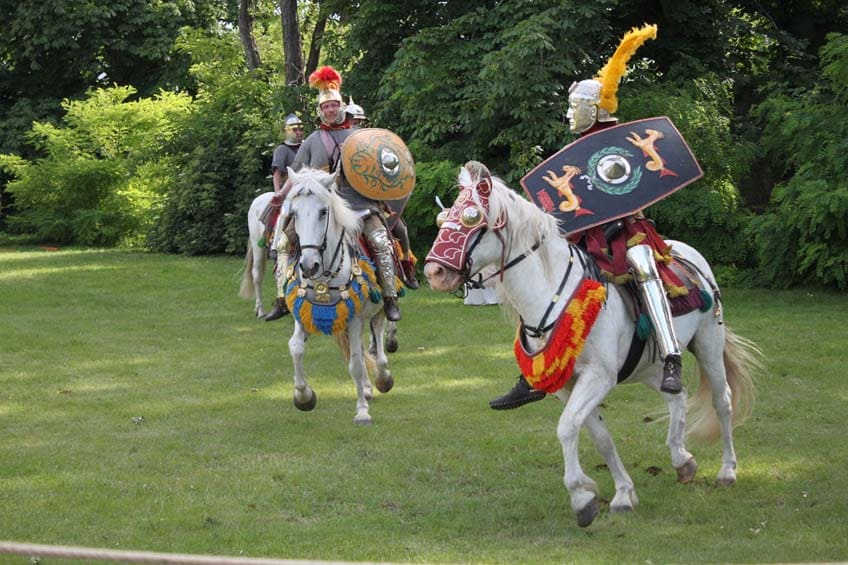
Embark on a fascinating journey through the history of horse tack. From ancient civilizations to modern times, we’ll explore the evolution of essential riding equipment like saddles, bridles, bits, and stirrups. Discover how these tools have shaped the art of horsemanship over centuries, offering insights into both English and Western riding traditions. Join us as we uncover the remarkable stories behind these enduring symbols of equestrian heritage.
Probable the most important piece of horse riding equipment in the history of horse tack is the saddle.
Whilst the earliest form of saddles were probably no more than pieces of cloth or pads placed on the horses back, the first saddles as we know them today were found in a Siberian Burial tomb dating back to 500 BC.
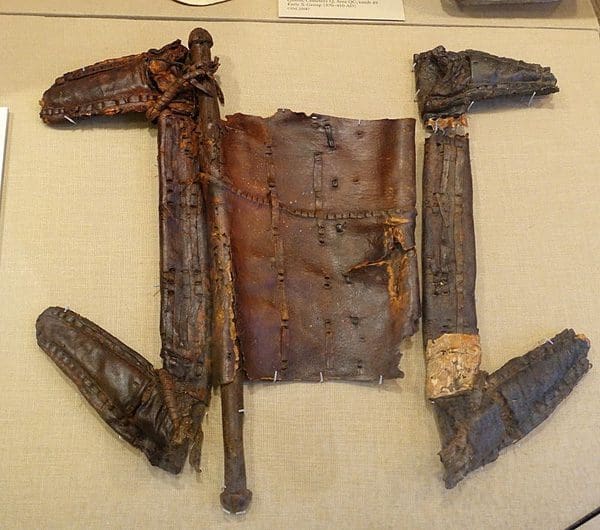
The earliest saddles can be physically traced back to about 500 BC, although there is disagreement about dates, with some scholars citing evidence that Equus (Latin for horse) or horses were being ridden as far back as 4000 BC by the Chinese. Horses were ridden bareback, there was no such thing as a saddle, or a bridle, instead, all that separated rider and horse was a piece of tasselled cloth, held on to the horse’s back by a strip of material, known in modern times as a girth. A simple rope looped around the neck controlled the horse.
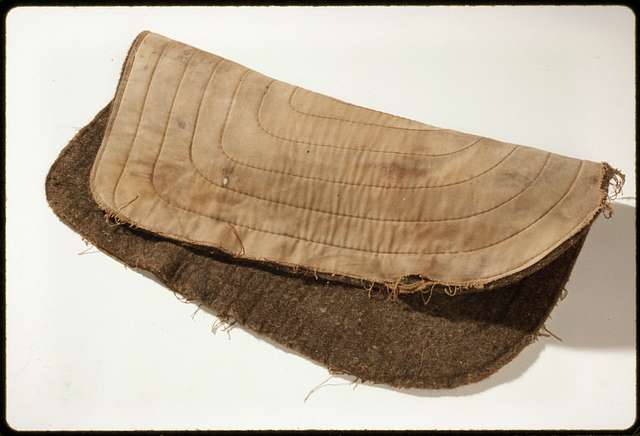
Over the next thousand years or so, cloths turned into pads and the thickness of the pad increased providing more comfort for both horse and rider. Although designs progressed, something we would recognize as a saddle today was not evidenced until around 500 BC when examples of saddle frames incorporating leather cushions, a pommel, and a cantle were found in the Siberian burial tombs of Eurasian nomads, however, early saddles were still treeless and did not use stirrups.
Early solid treed saddles were made from a wooden frame covered with felt and the earliest evidenced examples are depicted on cavalry horses in the terracotta army around 206 BC.
The earliest evidence of a wooden treed saddle in the Western World was a four-horn design used by Roman soldiers as early as the 1st Century BC. In terms of horse welfare, this was a major development. We know that saddle trees help to spread the weight on either side of the horse’s spine and distribute it evenly over the horse’s back. The saddle was at last more comfortable for the horse as well as the rider.
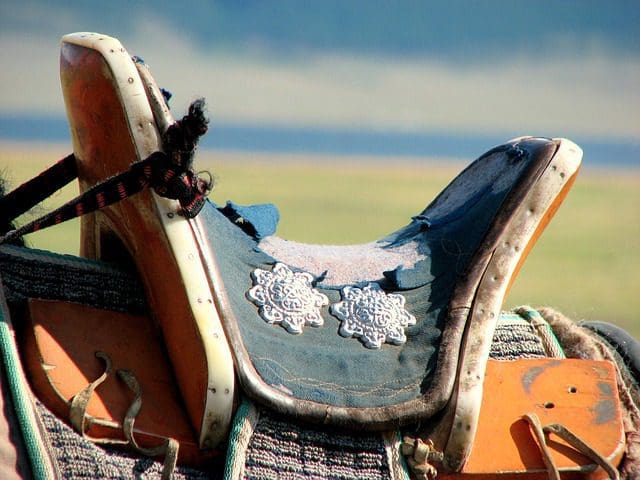
Stirrups and Stirrup leathers were invented by the Chinese in 300 AD, with pictorial evidence on a tomb in China.
Although this is the first evidence of proper stirrups as we know them today, the Chinese had developed an earlier version of a stirrup, but only one stirrup, which was used exclusively as a mounting aid. After the rider had mounted the single stirrup was looped over the mane.
Fighters in India took this one stage further by creating a stirrup-like “toe ring” attached to the pommel of a pad on the horse’s back. This gave some support and helped the rider balance, but must have caused some horrible injuries!
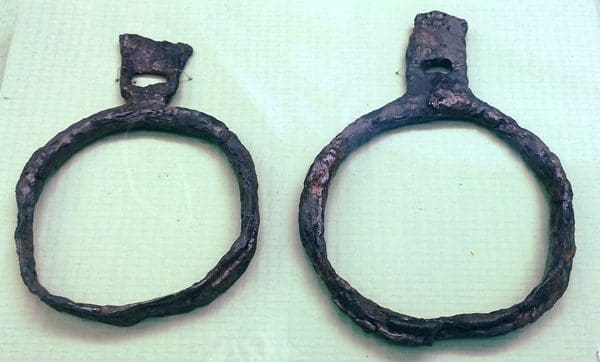
There is quite a lot of speculation over who invented the true stirrup as we know it today. Although certain experts believe early Nomadic tribes used them, they do not have physical evidence of the fact. We know that saddles without a solid tree would create abnormal pressure points caused by the rider’s weight when using stirrups, making the horse’s back sore and unrideable and so many experts hypothesize that the invention of a treed saddle and stirrups must have occurred simultaneously.
The earliest pair of stirrups were found in a Chinese Jin Dynasty tomb around 302 AD.
Stirrups greatly increased the rider’s ability to stay securely in the saddle and control the horse. It is argued, the invention of the stirrup was as important in the spread of modern civilizations, as the invention of the wheel or printing press.
From the earliest times, owning a horse was expensive and used as an indicator of wealth. Similarly, saddles, as they became more sophisticated were used as symbols of wealth. Elaborate decorations including fancy leather work, stitching, and precious metals were added to prove an individual’s status. Comfort and distinction were for the rider, rather than the horse. As saddles and stirrups progressed over the ages, to satisfy both the needs of horse and rider, so did the method of controlling the horse.
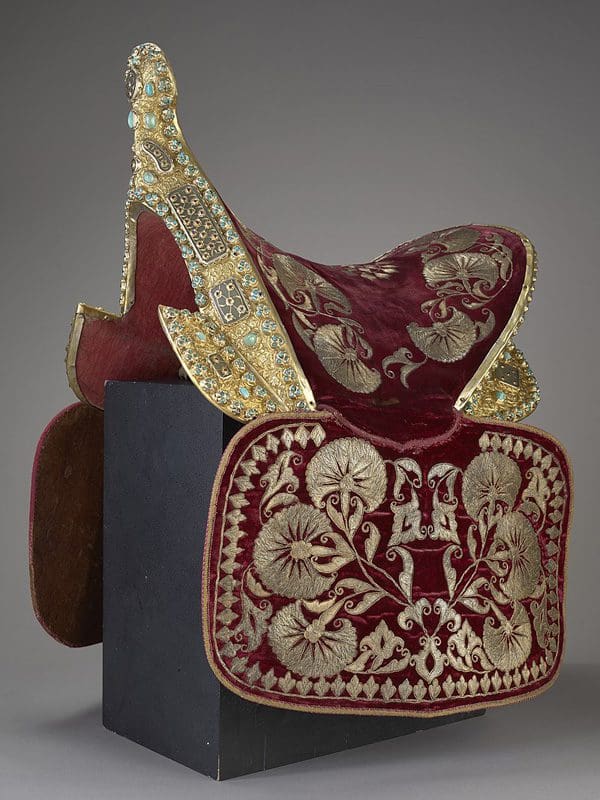
The earliest evidence of horse bridles were found during archaeological excavations in East and Central Asia, of Bronze age settlements by Mongolian herders.
Ever since the first horse was ridden there would have been a need to control the animal. From the first simple rope looped around the horse’s neck, the ability to control a horse was a huge step in their domestication and their use as transport and as cavalry in warfare.
Bridles were invented far earlier than anything remotely resembling a saddle and are likely to have been bitless, made of rope, sinew, or leather. The first discovery of archaeological evidence suggests that bridles were made up of a noseband and rigid cheekpieces, whilst limited damage noticed on the teeth of horse skulls found during excavations, is consistent with the use of a soft organic bit made from bone, horn, or hardwood. Metal bits as old as 1200 BC have been discovered and thousands have been recovered within the continent of the Eurasian Steppes dating from 1000 BC onwards.
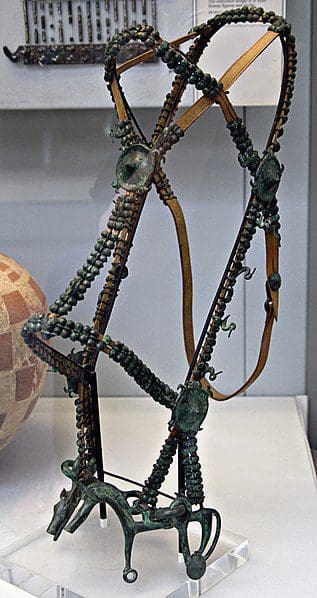
Evidence from ancient artworks, paintings, and carvings, show bridles and bits in regular use by everyone from the Egyptians, Assyrians, and Greeks, to the Romans and Medieval Horse tack by Knights during the Middle Ages. Bridles were being used to control horses for transport, riding, chariot driving, and war. The earliest surviving record of horse care and education, a manuscript written by Xenophon a Greek General around 400 BC called the “The Art of Horsemanship”, describes improvements to be made on standard bridle designs to help with better control, movements, and training.
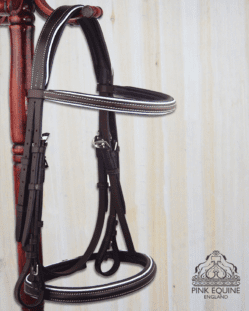
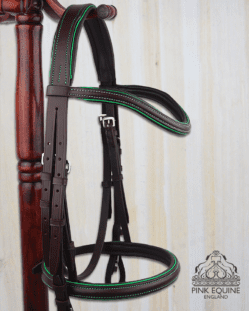
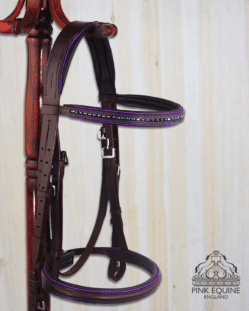
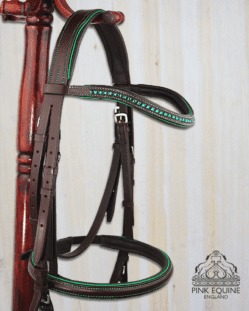
Sadly after Xenophon, there is very little evidence of how horse tack, saddles, and bridles were influenced for the next 1000 years, until the middle ages and the rise of the medieval knight and medieval horse equipment. Horses needed to be much larger and stronger (thanks to selective breeding) having to carry a knight in heavy armour into battle. Controlling a larger stronger animal resulted in harsher equipment, for example, bridles with long-shanked bits. (Shanks provide leverage, and the longer the shank the less the movement of the reins required to apply pressure to the horse’s mouth.)
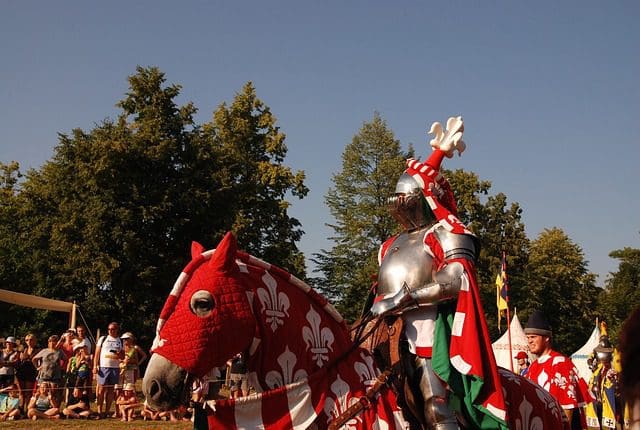
Historians and equestrian enthusiasts are fortunate to be in possession of writings by celebrated experts of the day from Dom Duarte the 1st King of Portugal in the early 14th Century to Francois Baucher in the early 19th Century who are not only responsible for the improvements in horse tack, that is very much in evidence today, but also for the fundamental principles still used in dressage, classical dressage, and many other modern equestrian disciplines.
Over the last hundred years or so, horse riding has evolved into two distinctive riding styles primarily to benefit the way a horse was being used. These can be simply defined as “English Riding” and “Western Riding”. There are significant differences between English Horse Tack and Western Horse Tack.
Although collectively known as English Riding, there are many different styles seen around the world, but all have one thing in common and that is a flatter “English” saddle, designed to allow the rider to have closer contact with the horse’s back. English disciplines allow the horse more freedom to move in an optimal manner for a given task, ranging from dressage and show jumping to horseracing. Other differences include most versions of English riding requiring riders to use both hands on the reins and the rider having direct contact with the horse’s mouth via the bit and the reins, used as part of an aid in controlling the horse.
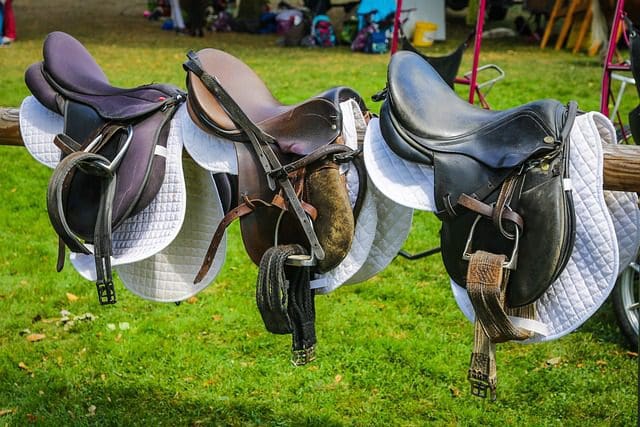
Western horse riding can trace its roots back to cowboys and working ranches in the United States during the 19th Century. Horse riding equipment and styles evolved to meet the needs of ranch hands who spent many hours in the saddle and needed light control of the horse through hands and leg signals. Western saddles are larger and heavier than English ones and feature a deep secure seat, high cantle, or saddle horn.
The larger saddle means the weight of the rider was spread over a larger area of the horse’s back which makes it more comfortable, especially for long days chasing cows. A larger thicker western saddle pad was required to accommodate the fact that unlike English saddles, Western saddles do not have any padding underneath.



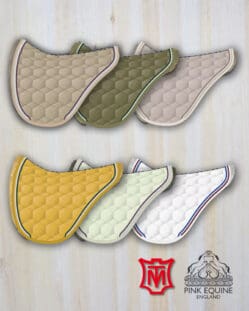
Often Western riders would need to free up one hand to rope cattle or use a lasso and so western riding uses the neck rein method to change direction (light pressure from one hand on the reins against the horse’s neck). Also because only light control of the horse is needed, Western Bridles often do not have a noseband or browband
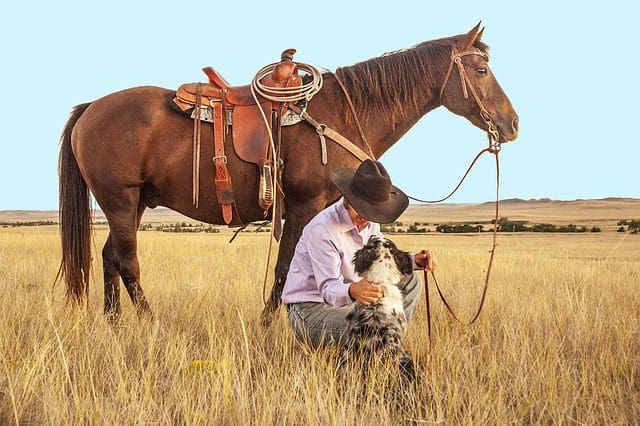
The first official invention of a western saddle was by a man called William D Davis, born in New York in 1853. Davis had an idea to make long rides easier and whilst serving as a buffalo soldier in the 10th Cavalry division sketched out his idea to use springs under the saddle seat and above the stirrups making longer rides much more comfortable. He filed a patent for this riding saddle in 1896.
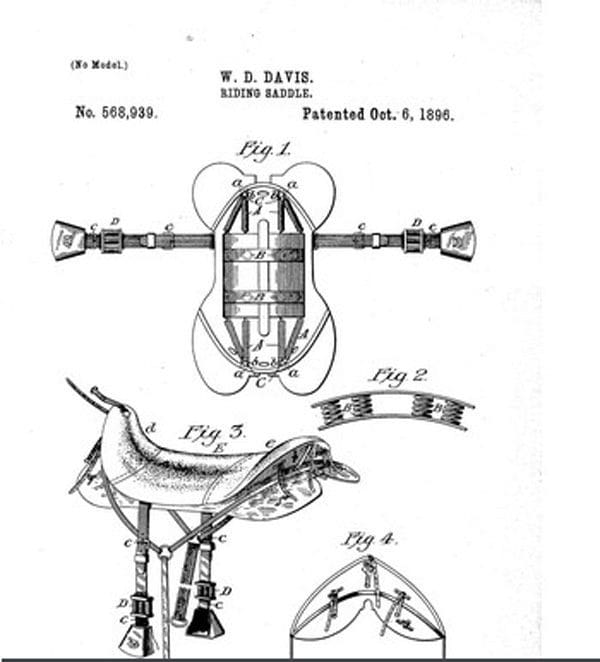
Over the past century, the world of horse tack has undergone a whirlwind of transformations, blending tradition with innovation in an exciting evolution. From the sturdy leatherwork of yesteryears to today’s cutting-edge materials and ergonomic designs, every aspect of horse tack has seen remarkable advancements.
Bridles now boast adjustable features for optimum comfort, saddles offer customizable fits to suit every steed, and bits come in a variety of styles catering to individual horse preferences. Even saddle pads have undergone a makeover, with high-tech materials providing superior cushioning and breathability. With each passing year, equestrian gear continues to push boundaries, ensuring both horse and rider can perform at their best while enjoying the ride.
Pink Equine, a pioneer in the horse tack industry since 2007, is renowned for its innovative and stylish collections. While our vibrant designs allow riders to coordinate with their horses and make a fashion statement, we prioritize functionality and comfort above all else.
From Horse Bridles and Browbands to Girths and Headcollars, all our leather work is crafted from premium Italian Leather with meticulous attention to detail and protected by our quality guarantee and custom made to your requirements. We only sell direct to customers, so there are no middlemen and this helps keep costs down.
Additionally, our partnership with E A Mattes brings you the finest saddle pads and sheepskin girths, reflecting our commitment to excellence and personalized service. With a focus on quality materials and bespoke manufacturing, our horse tack seamlessly combines style with substance.
In addition to selling our custom horse tack, we’re all about fostering community spirit in two exciting ways! Dive into our featured articles, like this one, for helpful tips and insights. Plus, join our Pink Equine club for free! Get in on exclusive competitions, stay up-to-date with our newsletter, be the first to access new ranges, and enjoy special discounts. Join the fun – become a member today!